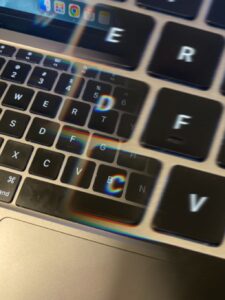You Used to Call Me on my Cellphone
So you’re probably thinking, is getting a DSLR camera worth it? Or can I just use my cellphone? Well, I can’t speak for Android phones, but my iPhone can take some pretty decent photos. However, something sparks my creativity while holding my DSLR camera, but I appreciate the convenience of my iPhone. A cellphone camera automatically adjusts, and you can take a photo at a whim. With a DSLR camera, while you can use the Scene Intelligent Auto, we are trying to be a smidge above beginner. As we advance beyond using the auto setting, it takes a bit of time, or in my case, a lot of time, to adjust the manual exposure settings. Unless you are committed to becoming a photographer or, like me, a wannabee photographer, a cellphone camera will do just fine.
This week, I’ve been exploring a few different phone apps to explore photography at my fingertips. I specifically focused on three apps: VSCO, Photon, and Pixlr.
VSCO
VSCO is an app where users edit their photos and share their edited pictures on the app’s feed to their followers. VSCO has different presets, FX, tools, collages, and montages. I used a free trial because I’m a broke uni student. The monthly rate will cost you between $9.99 and $17.99. Do I think this app is worth the cost? No, but it was probably worth it when the app was trending in 2019 for some. I guess I’m not a VSCO girl. The app was fun to play around with and try the different presets, but I quickly cancelled my subscription before my free trial ended.

Photon


I also subscribed to a 7-day free trial for Photon. This is a less pricey option, but it will set you back a whopping $4.99 a month or $24.99 per year. There’s a neat option of a one-time purchase of $49.99 if you see yourself using this app for the long run). Photon’s features most relate to the DSLR camera. Photon has an auto setting that determines the best image with minimal work. However, it has a manual setting that adjusts the ISO and shutter speed. I found it interesting that the app shows different exposure levels – what the photo would look like if it were overexposed or underexposed. A levelling and grid feature ensures your photo is straight and has the proper ratios.
Pixlr

2 Words – Free but limited (okay, that was technically three words). Pixlr is another photo editing app, but did I mention – it’s FREE! The preset photo editing tools allow you to pick different overlays and effects or stylize them to make them to look like pencil drawings or watercolours. Pixlr has a range of frames and tools like crop, rotate, double exposure, blur, etc. With Pixlr, you can adjust the brightness and sharpness of a photo.
Personally, I’m going to stick with my iPhone camera when it comes to phone apps for photography. I liked the Photon app the best of the three, but I don’t love paying for a photography app when I have a decent iPhone camera and a DSLR camera.